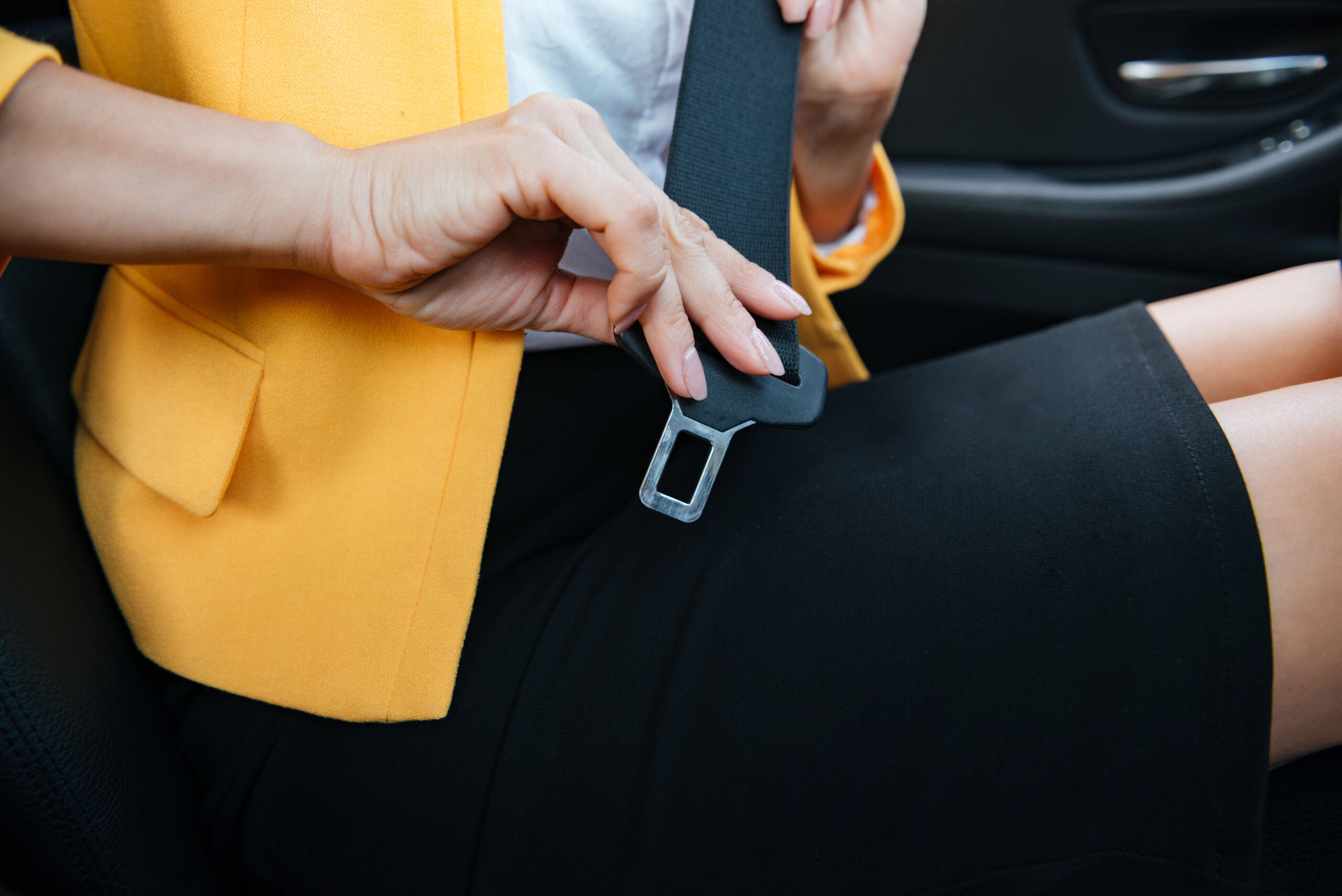Question: I was recently in a minor accident, which caused my seat belt to lock up. I was able to unbuckle it and get out of the car, but now my seat belt has too much slack and the webbing won’t go back into the retractor. How do I unlock it?
Answer: There are a few reasons your seat belt might jam, including the sudden force of an accident, tangles inside the retractor, or dirt and grime buildup on the webbing. Here are our tips on how to fix a locked seat belt and get back on the road:
Try to override the locking feature first
Before you do anything else, check to see if you can release the lock holding the belt in place. Pull the belt out as far as it will go, then slowly allow the webbing to reel back into the retractor. Gently pull the belt out again—if it slides free without resistance, the lock has released and your seat belt won’t be stuck anymore. You may need to repeat this process several times to fully unlock your belt.
Note: If the seat belt is caught on something like an armrest or a car seat, hold the belt just above the retractor, then pull as much slack as possible toward the retractor before letting it reel back in. If that doesn’t work, you may have to remove the seat to release the lock.
Take apart the retractor if the belt is still stuck
Use a flathead screwdriver to take off the plastic cover that holds your seat belt in place. If it’s a rear seat belt that’s stuck, you may need to remove the entire seat to fully access the retractor.
Once the retractor is open, pull the seat belt out entirely. Be sure to straighten out any kinks or tangles in the belt as you do so. If there’s anything jammed inside the retractor, remove it with pliers.
Clean your seat belt once it’s unjammed
Dirt and grime that builds up on the seat belt over time can sometimes cause it to become stiff, which could be why the webbing is jammed inside the retractor.
To clean your seat belt, pull the webbing out as far as you can and wipe the whole thing down with hot soapy water or an upholstery cleaner. If the belt is particularly dirty, you might need to do this a few times. Then dry the belt to make sure moisture doesn’t build up in the retractor.
Replace the webbing if it’s torn or damaged
Don’t take risks with your seat belt, which the National Highway Traffic Safety Administration says can lower your risk of a critical injury in a car crash by 50%. So if you notice that it’s frayed, torn, or caked with grime that’s difficult to remove, it’s best to replace it. New seat belt webbing with hardware costs around $80–$150 depending on your car, although you may pay less if you drive an older vehicle. It’s a relatively simple DIY job, but you can also generally pay $100–$150 in labor to have the new belt installed professionally by a mechanic.
Retract the belt and replace the retractor cover
Once the seat belt is clean, dry, and unjammed—or the replacement has been installed—allow the belt to reel itself fully back into the retractor. Test the mechanism by pulling the belt out and letting it retract several times. If it’s working well, replace the retractor cover by gently popping it back into place.
Why do seat belts jam after an accident?
Even though it can be inconvenient for your seat belt to get stuck, they are actually designed to lock after an impact in order to securely hold the occupant in place until help arrives.

Expert insurance writer and editor Amy Bobinger specializes in car repair, car maintenance, and car insurance. Amy is passionate about creating content that helps consumers navigate challenges related to car ownership and achieve financial success in areas relating to cars. Amy has over 10 years of writing and editing experience. After several years as a freelance writer, Amy spent four years as an editing fellow at WikiHow, where she co-authored over 600 articles on topics including car maintenance and home ownership. Since joining Jerry’s editorial team in 2022, Amy has edited over 2,500 articles on car insurance, state driving laws, and car repair and maintenance.

Everett Cook is an award-winning journalist and editor with more than 10 years of experience across a variety of industries. In editing for Jerry, Everett’s mission is to help readers have a better understanding of the costs of owning or leasing a car and to better understand their vehicle in terms of insurance and repairs. Prior to joining Jerry, Everett was an editor for Axios. His previous work has been featured in The New York Times, The Los Angeles Times, The San Francisco Chronicle, The Atlantic, Atlantic Re:think, The Boston Globe, USA Today, and others. He’s also been a freelance writer and editor with experience in SEO, audience building, and long-term content roadmaps. Everett is a proud graduate of the University of Michigan.








